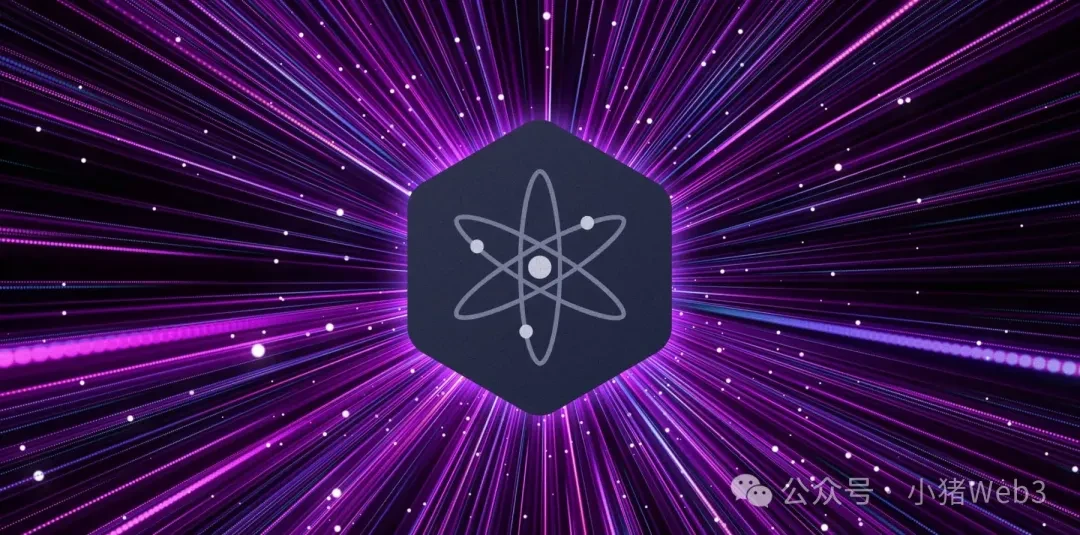Предсказуемая производительность DApps: от цепочек приложений до эластичного блочного пространства
Artela White Paper
On June 20, Artela, a new parallel EVM Layer 1 project, released a white paper titled “Full-Stack Parallelization,” which aims to fully unleash blockchain scalability and enable DApps to have “predictable performance.”
Predictable performance refers to providing predictable TPS for DApps, which is crucial for DApps in certain business scenarios. DApps deployed on public chains, in general, must compete with other DApps for the computing power and storage space of the blockchain. Therefore, in the case of network congestion, it will bring relatively high transaction execution costs and transaction delays to business operations, greatly restricting the rapid development of DApps. It is conceivable that if a user is using a decentralized instant messaging software, because the block space of the underlying blockchain network is preempted by other DApps, the users messages can hardly be sent and received, which is a disaster for the user experience.
To solve the problem of predictable performance, the most common approach is to use an application-specific blockchain, also known as an Appchain, which is a blockchain that dedicates block space to specific applications.
Artela innovatively proposed the Elastic Block Space (EBS) solution, which is based on the concept of elastic computing and dynamically adjusts block resources according to the specific needs of DApps at the protocol level, providing independent expansion block space for DApps with high demand.
This article will introduce application chains and elastic blockspace respectively, and compare the advantages and disadvantages of the two.
The development path of application chain
Application chain is a blockchain created to run a single DApp. Instead of building on an existing blockchain, application developers build a new blockchain from scratch with a customized virtual machine to execute transactions from user interactions with the application. Developers can also customize different elements of the blockchain network stack – consensus, network and execution to meet specific design requirements, thereby solving problems such as high congestion, high cost, fixed features, etc. on shared networks.
Application chain is not a new concept: Биткойн can be seen as the application chain of digital gold, Арвив can be seen as the application chain used for permanent storage, and Селестия can be seen as the application chain that provides data availability.
Since 2016, application chains have included not only single-chip blockchains, but also multi-chain forms, that is, ecosystems built by multiple interconnected blockchains, mainly represented by Космос и Palkadot . Cosmos is the first to envision a world of multiple interconnected blockchains, and is committed to solving the cross-chain interaction problem of blockchains. It can quickly develop and start a chain through the Cosmos SDK, and has designed the IBC protocol, which can enable barrier-free blockchain interaction. Palkadot aims to become a perfect blockchain expansion solution. The chains in its ecosystem are called parachains. Palkadot advocates shared security from the beginning, and different parachains can communicate through cross-consensus information.
At the end of 2020, as Ethereum expansion research focused on several solutions such as sidechains, subnets, and Layer 2 Rollups, application chains also hatched corresponding forms. Sidechains such as Полигон and subnets such as лавина both improve the overall service capabilities by improving the experience and performance of sidechains or subnets; Layer 2 Rollups supports application chains in the form of modular stacks, among which OP Stack и Полигон СДК are welcomed by many projects. The goal of the Layer 2 Rollups solution is to increase the throughput and scalability of the Ethereum network to meet the growing transaction needs and provide more extensive interoperability and interoperability.
At present, a large number of applications have been built in application chains across various platforms. For example, Axie launched its Ethereum sidechain Ронин in early 2021 ; DeFi Kingdoms announced its migration from Harmony to Avalanche subnet at the end of 2021; Injective launched its DeFi application chain built with Cosmos SDK in November 2021; dYdX announced in mid-2022 that the V4 version of the product will use Cosmos SDK technology to build an independent application chain; Uptick Network launched the ecological application chain Uptick Chain in 2023, which serves the infrastructure for the development of Web3 ecological applications . The infrastructure also has a rich commercial protocol layer.
Advantages and disadvantages of application chains
Application chains gain full power to run their own sovereign blockchains rather than relying on the underlying Layer 1, which is a double-edged sword.
There are three main advantages:
-
Sovereignty: The application chain can solve problems through its own governance solutions, maintain the independence and autonomy of individual application projects, and prevent all kinds of interference and obstruction;
-
Performance: It can meet the low latency and high throughput required by applications, provide users with a good experience, and greatly improve the actual operation efficiency of DApp;
-
Customizability: DApp developers can customize the chain according to their needs and even build an ecosystem, providing a flexible enough evolution method.
There are also three disadvantages:
-
Security issues: The application chain needs to be responsible for its own security, including weighing the number of nodes, maintaining the consensus mechanism, avoiding pledge risks, etc. The network is relatively unsafe;
-
Cross-chain issues: As an independent chain, the application chain lacks interoperability with other chains (applications) and faces cross-chain issues. Integrating cross-chain protocols will increase cross-chain risks;
-
Cost issue: Application chains require a lot of additional infrastructure, which requires a lot of cost and engineering time. In addition, it also includes the cost of running and maintaining nodes.
For startups, the disadvantages of application chains have a huge impact on their DApps that enter the market . Most startup development teams not only cannot solve security and cross-chain problems well, but are also discouraged by the high costs of manpower, time, and money. However, predictable performance is a rigid requirement for specific DApps, so the market urgently needs a Layer 1 predictable performance solution.
Flexible Block Space
In Web2, elastic computing is a common cloud computing model that allows systems to dynamically expand or shrink computer processing, memory, and storage resources as needed to meet changing demands without having to worry about capacity planning and engineering design for usage peaks.
Elastic block space automatically adjusts the number of transactions a block can accommodate based on the degree of network congestion. If for transactions of specific applications, the blockchain network provides stable block space and TPS guarantees through elastic computing, this achieves predictable performance.
MegaETH has also proposed a similar concept of elastic dynamic expansion and believes that it is the inevitable development path for DApp to support large-scale adoption. It predicts the following technological developments in the next 1-3 years:
-
Phase 1: Horizontal expansion at the verification node level;
-
Phase 2: Static expansion at the chain level;
-
Phase 3: Dynamic horizontal expansion at the chain level.
Artela has truly implemented this concept , solving the core problem of the first phase of how to coordinate the horizontal expansion of verification nodes to support elastic computing . When the protocol in the Artela network grows, it can subscribe to elastic blockspace to handle the growth of protocol users and throughput. Elastic blockspace provides independent blockspace for DApps with high transaction throughput requirements, allowing them to scale as they grow. In essence, blockspace determines the amount of data that can be stored in each block of the blockchain, which directly affects transaction throughput. When DApps experience a surge in transaction demand, subscribing to elastic blockspace becomes useful to efficiently handle the increased load without affecting the underlying blockchain.
The implementation of elastic computing is divided into real-time elasticity and non-real-time elasticity. Real-time elasticity generally refers to responding to capacity expansion within minutes, while non-real-time elasticity only requires responding to capacity expansion within a limited time. Artela adopts the non-real-time elasticity method, that is, when the network detects the need for capacity expansion, it will initiate an expansion proposal, and after one or more epochs (not real-time), the verification nodes of the entire network will complete the expansion and submit proof of the expansion for other validators to challenge.
Artelas elastic block space solution actually borrows a lot of ideas from distributed databases and is also a continuation of blockchain sharding technology. From the perspective of computing sharding, it expands capacity for application traffic in demand, avoiding the problem of cross-shard transactions and making the developer and user experience no different from before. At the same time, it adopts non-real-time elasticity with relatively low landing difficulty, which enhances the applicability while meeting the actual needs of many DApps.
It is worth mentioning that elastic block space, as a solution for horizontally expanding blockchain performance, is based on the premise that transactions can be parallelized . Only after the transaction parallelism is improved, it is necessary to horizontally expand the nodes machine resources to improve transaction throughput.
Therefore, for Layer 1 like Ethereum, the transaction serialization problem is the most direct performance bottleneck, and the block size is also limited by the variable-size block Gas limit (upper limit 30,000,000 gas), so we can only seek Layer 2 expansion solutions.
For high-performance Layer 1 like Solana, although it supports parallel execution of transactions and performance can be horizontally expanded, it cannot cope with the problem of predictable performance of DApp during peak demand. Solana implements a local fee market solution, which aims to prevent any single-demand transaction from monopolizing scarce block space, limit time-based fee increases, and mitigate the negative impact of sudden demand peaks. For example, during the issuance of NFTs, NFT issuers will quickly consume the computing unit (CU) limit of each account, and subsequent transactions must increase priority fees to be processed within the limited space of the account.
It can be said that Artela further extends the concept of local fee market in Solana by using a flexible block space solution to cope with the surge in transaction demand. It not only ensures the predictable performance of DApps, but also prevents fee surges and congestion across the entire network, killing two birds with one stone.
Подведем итог
Whether it is the application chain or the elastic block space, they are essentially to solve the problem that different DApps have different requirements for blockchain performance , or the problem of predictable performance. There is no good or bad solution, only suitable or unsuitable. These two solutions remind me of the Fat Protocol Theory – a theory proposed by Joel Monegro in 2016, which revolves around how cryptographic protocols should capture more value (than the collective value captured by the applications built on them).
The application chain is actually a thin protocol , especially when Layer 1 adopts a modular architecture. The protocol layer is completely customized by the application layer. Although it brings a better value accumulation mechanism to the application, it also brings high costs and limited security.
Elastic Blockspace is actually a fat protocol , which is an extended function of the underlying Layer 1 protocol layer. It effectively lowers the entry threshold for participants with predictable performance requirements. At the same time, the protocol can also capture application value and generate a positive feedback loop.
This article is sourced from the internet: Predictable performance of DApps: From app chains to elastic blockspace
Original author: @LiamWang 88 Web3 independent researcher I first heard about and participated in blockchain in late 2017 and early 2018. At that time, I was working in a large Internet company. Thanks to the inherent advantages of Internet companies in trying new technologies first in their business and the relatively strong programmer atmosphere, I had the opportunity to get in touch with blockchain relatively early. At that time, I often hung out with a group of programmer friends, and the topics they talked about most were: Bitcoin, mining, ICO, air coins, etc. I don’t come from a technical background, so what they said was completely confusing to me. But because I come from a content background, my intuition tells me that blockchain is a very different technology. So, I…













